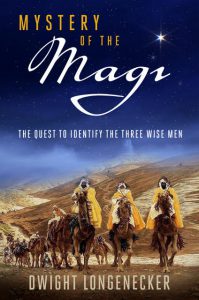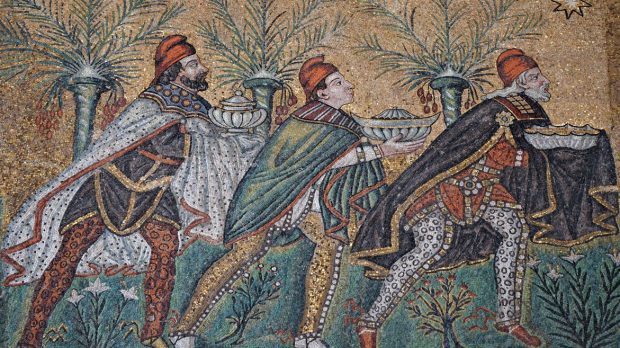During the Christmas and Epiphany season most Christians will accept the story of the three wise men as part of the seasonal charm. Schoolboys will dress up in their crimson and purple robes, and wearing crowns and carrying little caskets, process behind the Bethlehem star. This year a new animated film of the story is captivating audiences and the tale of the mystical wizards from the East who went on an arduous journey to find the true light of life will continue to enchant and inspire.
But did it really happen?
Most Bible scholars believe the story is in the category of a midrash—a Jewish tale configured to fulfill an Old Testament prophecy or comment on a passage of Scripture. Some like Marcus Borg and John Dominic Crossan teach that the story of the Magi is simply a delightful parable which teaches us the lesson that to find the truth we must go on a long journey with guidance from above. In his monumental study of the gospel accounts of Jesus’ birth, the Bible scholar Raymond Brown agreed that it was almost a point of orthodoxy among Biblical experts that the Magi story was no more than a pious fiction, and that to suggest otherwise would be professional suicide.
Not having an academic career to worry about, I thought it would be interesting to do the research and ask whether there might be some historical basis to the age old tale of the wise men who came from the East to worship the Christ child.
What I found was astonishing. Once I peeled away the layers of tradition and legend that had accumulated, I found that the historical facts fit Matthew’s simple account perfectly. I dug into the geography, ancient history, archeology, religion and culture of the Roman Empire at the time of the birth of Jesus and was amazed to find a perfectly good explanation about who the wise men were, where they came from and why they traveled to pay homage to the newborn King of the Jews.
The wise men were diplomats from the neighboring kingdom of the Nabateans. Centered on the famous city of Petra, the Nabatean king Aretas IV had every motivation to cement an alliance with Herod the Great. When the magi at his court discerned that a new heir to the Judean throne was born he sent them as envoys to Herod’s court to pay homage. Their gifts of gold, frankincense and myrrh were diplomatic offerings representative of the Arabian kingdom. With a Jewish background and knowing the Old Testament prophecies, they would also have been searching for the coming Messiah.
These and many other details came together as I delved deep into the history. Naturally I asked why no one had done this research before, and the answer is intriguing. The skeptical Bible scholars assumed that the story was a fiction. As I have pointed out, to question this assumption was an academic no-no. Therefore no one did the sleuthing. Why would you go on a quest to identify the historical Peter Pan?
Meanwhile, the believers simply accepted the traditions they had received that the wise men were mystical stargazers from Persia or India or Africa who followed a magical star across the desert sands. Because they accepted the traditions and legends without question they too did not do the digging to find the historical wise men.
When I began the research I found some other good reasons why the identity of the wise men was not discovered earlier. For a long time the Nabatean civilization was lost to historians. Their culture in Northwest Arabia drifted into the ruins of the desert sands and because they left no written history, very little was known about them. It is only within the last 50 or 60 years that we have learned more about this fabulous and mysterious desert kingdom. More recently, advanced techniques of archaeology and forensics, combined with new sciences like archaeoastronomy have provided more clues to the identity of the wise men.
Why is it important to uncover the identity of the three wise men? Its important because the vast majority of people put the story of Christ’s birth into the same big magical box with the other charming stories of Christmas. Let’s face it, shepherds hearing angels sing and mystical wizards who follow a magical star fit in neatly with talking snowmen, Santa and his elves, a magical sleigh with flying reindeer who zoom across the night sky and everything full of fairy dust, twinkle lights and magic.
Grounding the magi story in the dusty history of the ancient Middle East reminds us that the gospel stories are not fanciful fictions, pretty Sunday School stories or religious parables. History matters because truth matters, and since Christmas is the time when the eternal Truth took human flesh and entered human history, the Magi matter.


